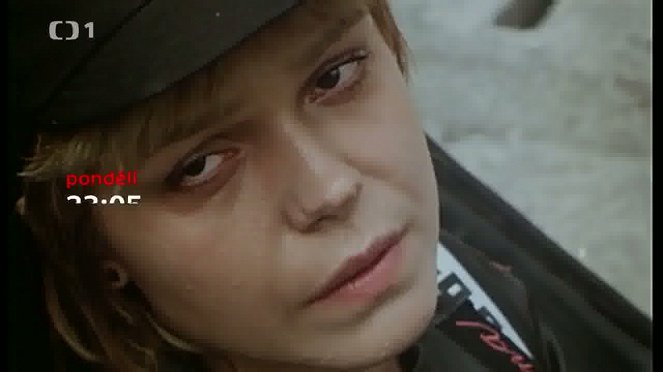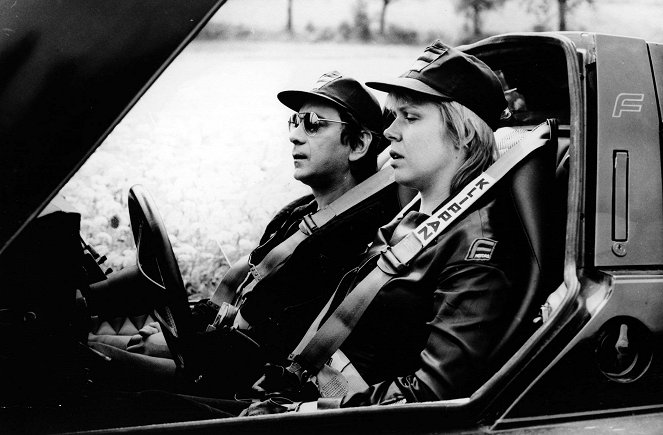Rendező:
Juraj HerzOperatőr:
Richard ValentaZeneszerző:
Petr HapkaSzereplők:
Jiří Menzel, Dagmar Havlová, Jana Břežková, Petr Čepek, Jan Schmid, Zdenka Procházková, Blanka Waleská, Zdeněk Ornest, Ilja Racek, Vít Olmer (több)Tartalmak(1)
Dr. Marek sebészi fizetését mentőzéssel egészíti ki. Sofőrje és asszisztense, a csinos Mimi egy napon benevez egy autóversenyre. Marek megtudja, hogy a Ferat cég autója, amivel Mimi versenyezni fog, emberi vérrel működik, a jármű a sofőrök talpából, a gázpedálon keresztül "tankol". Marek elhatározza, hogy leleplezi Drakula motorizált leszármazottait. (MTV)
(több)Videók (1)
Recenziók (3)
"Upír z Feratu" is one of the truly successful Czechoslovak horrors. If I thought we didn't have proper B-movies, I just realized that we do. The car is fully utilized, and it is even connected to sci-fi, which also works quite well. The viewer gets a rather unusual experience, which is well seasoned with Czech realities. The era of the film suffered mainly because it was heavily censored, which is a shame, because there could have been more blood here.
()
While Herz's encounter with Josef Nesvadba can be considered provocatively inspiring, other Czech encounters with the genres of horror or science fiction need to be tolerated only as experiments or trials. Even though the final form of Ferat Vampire is described by Herz as a mere fragment of the film he intended, it remains an interesting testimony to the Czech homage to the classic expressionist masterpiece. It's no coincidence, by the way, that Herzog's German remake Nosferatu the Vampyre was created just two years earlier. However, Herz was working in under the conditions of a state film, and he was dependent on the Mladá Boleslav car factory and had a very unbalanced cast at his disposal. Herz himself longed to be one of the actors united by the role of the vampire Nosferatu, and therefore cast himself in fragments of the silent film commented on by the unmistakably ironic Y-like diction of the gifted Schmid (here in a role paraphrasing Van Helsing). He entrusted the leading female role to his favorite Dagmar Havlová, for whom he had always had a soft spot and repeatedly managed to awaken in her a different level of her young talent. He worked interestingly with both Menzel and Čepek, he shrouded the old Blanka Waleská in strange mystery, but he couldn't get much out of Jana Břežková, who could perhaps be trusted to be a racing driver, but anything else was a problem for her. A separate chapter remains the lively sapphic Madame Ferat entrusted to Zdenka Procházková, who was by that time already a Czech-Austrian actress. Not much remains of Švankmajer's ideas, but the reference to him is at least confirmed by the cut to his film The Coffin House. It could have had great gore comparable to Western films of the time, but at least this way we get a more interesting psychological drama with elements unprecedented in Czech cinema.
()
I returned to Ferat Vampire after many years, and it cost the film a star. The most valuable thing about it is the idea taken from Josef Nesvadba's story about a car powered by human blood. I don't know if it was his original idea, but I haven't come across anything similar from earlier times. In any case, it is a provocative idea that can be exploited abundantly. Juraj Herz had already had his successful period a long time before this, but in a few scenes, he recalls his better self, the one that filmed Morgiana or The Cremator. The core of the problem is the screenplay. I don't know to what extent it was influenced by censorship bans, but it was created at a time that was unfavorable to horror and sci-fi, as they were considered decadent genres and as such, suppressed. The small budget had a negative impact, and the decorated Škoda car doesn't evoke fear or admiration today, at most a tolerant smile. Jiří Menzel's single-expression acting doesn't help either. A charismatic character actor was needed here. I give it an overall impression of 40%, with the addition that if any Czech film deserves a remake, it is this one.
()



Hirdetés